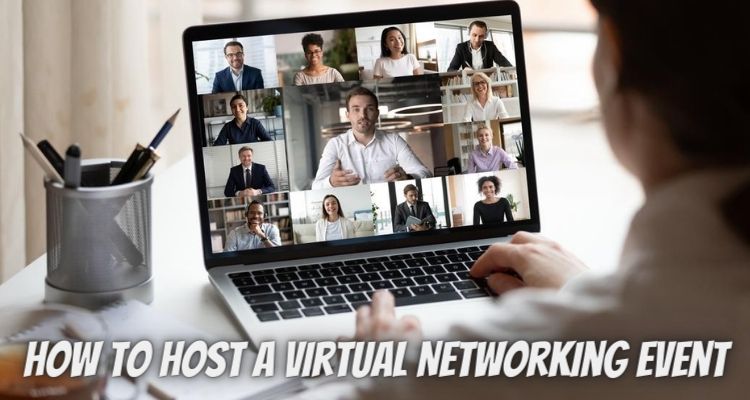How to Host a Virtual Networking Event
Business conferences and events have all gone digital. So, if you are looking to revive your business, you have to know how to host a virtual networking event.
Let’s start from the basics. What does it mean to host a virtual networking event? And why is it different from all the trade shows and exhibits you may have already done?
A virtual networking event has the same primary goals. Namely, to enhance your own network, improve your reputation as a host, and facilitate business deals for everyone involved. And once you start preparing the show, these points will not change that much either.
What is different is the set-up. If you are accustomed to hosting networking dinner gatherings, you will not have them anymore. You can still have industry-specific seminars, but you will have to adapt and use software that allows you to manage all the participants, materials, and certificates.—we recommend an advanced virtual event platform like Eventtia for speeding up these tasks.
1. Find One Good Idea First
Whether your ultimate goal is to get people to take out their wallets or give you support for a specific project, you will have to present an opportunity for the audience. For example, you may want to provide a solution for prospecting, which has become more difficult after the global pandemic hit. No matter what your message is, it should be precise, clear, and concise.
Keeping connections active also means building on previous successes. In other words, you could expand on topics you touched upon through content in your social media or websites. Usually, digital networking events benefit from the fact that attendees have already adapted to the change. So, you will not face the same difficulties as the previous hosts. But you will have to entice them with a value proposition.
In a similar manner, you have to focus on building bridges and connecting with the viewers. You had better have a chat for people to interact with you and each other. But you should also follow up with your attendees and send videos. Or other promotional material. Of course, the better the original idea you came up with, the easier it will be to create these bridges.
2. Search For Charismatic Guests
Inviting guests is essential to a successful virtual event. On average, the best shows have between five and ten guests. Most hosts prefer to involve seven or eight specialists in different fields.
Guests can provide learning opportunities. As well as insights into new tools that are relevant to your industry. Who should or should not invite to your event may depend on your audience’s preferences. So, make sure you pick people your attendees will like.
A pro tip is to have a set of rules for choosing your guests. In addition, you can also share these rules with potential guests and hear their opinions about them. These rules should include:
- at they need to discuss at some point
- prohibited themes
- time limits for their speech
Avoiding bad guests is as vital as picking the right ones. So, it is better to contact more panellists and see which one can provide the most relevant content.
3. Simplify Logistics
Attendees have to notice your virtual networking events first. Then, they need to decide they want to join. Finally, they have to attend at a specific time. What do these steps have in common? Logistics!
Starting from your virtual network registration page, attendees should be in total control of their time. Why? Because time is their most valuable asset. They will judge your event based on how worthwhile their time investment has been.
Make sure to automate most tasks like:
- fast checkout procedures for buying products and services you provide
- giving out links and passwords to access the live stream
- sending emails and reminders for the event one day and one hour before it starts
Do not waste your time planning the perfect virtual network event if you have not figured out the attendees’ next step. Think of this step as protecting the business itself. Your approach will differentiate your event from the competition in most niches.
Of course, you do not have to be 100% original or hire the best marketing specialists to make every step seamless. But it is better to strive to make it better and slightly different from events that do not think ahead.
4. Focus On Providing Comfortable Content For Your Audience
Once the network event begins, you have to entertain your audience. Most hosts let the audience meet before the event streams in a public chat room. In this way, they will break the ice and start discussing topics that may even inspire your communication style.
Timing is essential to make your audience feel at home. So, include breaks in your events. Alternatively, you can prepare video content and tell the audience how long it will last. So, the ones that need to have a bathroom break will get the hint.
If you have a team of sales reps in the public chat, have a separate chatroom to receive updates and suggestions. A moderator could also do a similar job.
Engage the audience as much as possible. Of course, you can ask the audience questions and reply to their answers. But do not limit yourself! You can use hashtags. You can ask them to send in pictures and videos. Be as creative as possible.
5. Research And Employ New Technology
AI matchmaking may give a huge boost to your networking event soon. Even though these technologies are in their infant stage, it is always better to follow them and see how they develop.
In the meantime, invest in researching your competition and improving your marketing strategies to enlarge the audience.
No one can really master how to host a virtual networking event without practice. So, make sure you get better results every time by changing little details to see which one works best.
Pain and urgency are the causes that bring more new customers to your events. So, develop tools that allow you to probe what challenges your attendees are going through to answer those questions during the next event.














Post Comment
You must be logged in to post a comment.